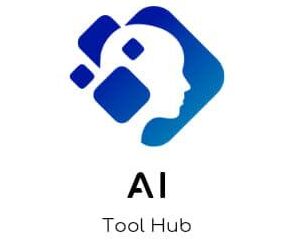Have you ever found yourself wondering just how to uncover your connections on LinkedIn? It’s a common scenario where you want to see who your contacts know, which can greatly enhance your networking efforts. Knowing how to navigate LinkedIn’s features effectively can open up a world of opportunity for you, whether in sales, job hunting, or simply cultivating professional relationships.
Understanding LinkedIn’s Connection Dynamics
LinkedIn operates on a unique system of connections, which can sometimes feel like a tangled web. Your immediate connections can amplify your reach through their own networks. To get the most out of this platform, it’s crucial to understand how connections work.
What Are Connections on LinkedIn?
Connections on LinkedIn are categorized into three main tiers: 1st-degree, 2nd-degree, and 3rd-degree connections.
- 1st-degree connections are people you have directly connected with. You can message them directly without any barriers.
- 2nd-degree connections are friends of your friends. You can see their profiles and send them a connection request or an InMail if you have a premium account.
- 3rd-degree connections are friends of your 2nd-degree connections. They are a bit farther out of reach, but they might still be within grasp depending on your 1st-degree connections.
Understanding these tiers is essential because it simultaneously sharpens your focus and expands your potential outreach. When you see a potential lead or a job opportunity, viewing mutual connections can provide valuable context.
How to Start Viewing Your Connections and Their Networks
When you’re ready to explore more about your connections, the process begins simply. Here’s how you can navigate through LinkedIn to see your connections and their connections while staying within the platform’s guidelines.
Accessing Your Connections
-
Go to Your Profile: Click on your profile picture at the top left corner after you log in. This brings you to your LinkedIn profile page.
-
Connections Tab: Look for the “My Network” option at the top and click on it. This will take you to a screen with an overview of your connections.
-
See All Connections: You’ll find a section to view all your connections. Here, you can scroll through your list and find someone you might want to know more about.
-
Utilizing the Search Bar: If you’re looking for something specific, using the search bar at the top can help you filter connections by name, location, or company.
Taking these steps allows you to see who you’ve connected with, which is the first step toward further exploring your network.
Exploring 2nd-Degree Connections
Once you have a list of your 1st-degree connections, it’s time to see who they are connected with. This is especially valuable for expanding your network strategically.
-
View Mutual Connections: When you click on a specific connection’s profile, look for the “Connections” section. You’ll see a detailed view that might even allow you to explore their 2nd-degree connections.
-
Checking for Mutual Connections: If you have mutual connections with someone you find interesting, LinkedIn will often highlight these relationships. This gives you a strategic advantage when reaching out.
-
Sending Connection Requests: If you discover someone you’d like to connect with through a mutual friend, why not send a personalized connection request? Reference the mutual connection in your message to increase your chances of acceptance.
These little touches can make a huge difference when trying to expand your professional network.
Leveraging LinkedIn’s Advanced Search Features
To see beyond just your immediate network, LinkedIn offers robust search capabilities. Understanding how to effectively use these tools can significantly broaden your outreach.
Utilizing Filters to Refine Your Search
When you head to the search bar at the top:
-
Input Keywords: Type in keywords related to the industry or role you’re interested in.
-
Use Filters: LinkedIn provides filters, including location, current company, past company, and school. Applying these filters helps you narrow down your search to find the most relevant connections.
Example of Using Filters
Here’s a simple breakdown of how you might approach filtering:
| Filter | Example Entry |
|---|---|
| Location | San Francisco, CA |
| Current Company | |
| Past Company | Amazon |
| Industry | Technology |
Using these filters helps streamline your efforts and makes it easier to identify individuals who are best suited for your networking goals.
Advanced Search Techniques
For those with a Premium LinkedIn account, you have access to even more advanced search capabilities. This includes features like:
- Sales Navigator: Tailored specifically for sales professionals, this tool allows you to refine searches extensively and see more detailed profiles.
- InMail Messages: For reaching out to candidates or leads that are not in your immediate network, InMail can be an effective way to open up conversations.
Engaging with Your Connections’ Networks
Now that you’ve identified potential connections through your existing contacts, engaging with them is the next step. This can often feel daunting, but remember, everyone is on the platform for pretty much the same reasons—to network and gain opportunities.
Personalizing Your Outreach
When you find someone worth reaching out to, personalizing your message can set you apart.
-
Reference Mutual Connections: Mention the mutual connections you share. This builds trust from the start.
-
Tailor Your Message: Ensure your message is relevant to their background or interests. Mention something specific from their profile that caught your eye.
Sample Message Template
Subject: Connecting through [Mutual Connection’s Name]
Hi [Their Name],
I noticed we both know [Mutual Connection’s Name]. I’ve been impressed with their [specific insight related to their work or achievements].
I’d love to connect and discuss [shared interests, the industry, etc.]. Looking forward to hearing from you!
Best,
[Your Name]
This simple structure maintains a friendly tone while being professional, making it easier to form a connection.
Being Active Within Your Network
Besides reaching out to new contacts, staying active within your existing network is crucial.
-
Share Relevant Content: Post articles or insights that reflect your interests and expertise. Those in your network may begin to engage with your content, sparking new conversations.
-
Comment and Like: Engage with your connections’ posts by commenting and liking, showing your support and interest in what they’re sharing.
Being consistent with engagement adds value and keeps you top-of-mind for those in your network.
Building Long-Term Connections
Once you’ve made connections, it’s important to nurture those relationships over time. Just a single message or connection isn’t enough; active efforts help maintain the rapport.
Regular Check-Ins
Set up reminders for yourself to check in with valuable contacts every few months. This doesn’t have to be a formal outreach; a simple message asking how they’re doing or if they’ve encountered any interesting developments can go a long way.
Sharing Opportunities
If you come across articles, events, or information you believe might interest your connections, don’t hesitate to share. It helps to position you as someone who provides value.
Following Up
If you had an initial conversation with a lead or a potential connection, following up is key. Whether it’s confirming the next steps of a discussion or just touching base, remaining engaged will help you stay relevant in their mind.
The Power of Periodix: An Efficient Tool for LinkedIn Outreach
As LinkedIn becomes an indispensable tool for professional networking, you might find it overwhelming to manage all these connections. This is where AI-powered tools like Periodix come into play, automating and streamlining your efforts.
Automated Messaging on Autopilot
With Periodix, you can set up automated messages tailored to different prospects:
-
Message Creation: The AI can write unique messages based on the recipients’ profiles, increasing engagement rates.
-
Response Tracking: It helps you categorize responses to gauge interest, making it easier for you to prioritize responses.
This means you can focus on high-value conversations while the tool handles follow-ups and notifications.
Unified Inbox Management
Managing multiple conversations across various LinkedIn profiles can become overwhelming. With Periodix, you can:
-
Centralize Conversations: All messages from various LinkedIn accounts are managed in one unified inbox, making it easy to track all communications.
-
Filter by Categories: Quickly sort through responses based on interest levels, helping you prioritize your engagement.
Maximizing Your Outreach Efforts
Using Periodix’s features allows you to expand your outreach without jeopardizing your efficiency. You can set outreach limits, ensuring compliance with LinkedIn’s terms of service while maximizing potential leads.
Conclusion: Connecting the Dots
Understanding how to navigate LinkedIn’s connection structures and utilizing tools like Periodix can dramatically enhance your professional networking efforts. By effectively reaching out and maintaining connections, you elevate your profile within your industry.
From personalized outreach to knowing when to follow up, every little detail counts. Remember to be authentic in your interactions—just like any other social platform, LinkedIn thrives on genuine relationships and contributions.
Now that you have these strategies at your disposal, it’s time to take action. Reinvent how you view your network and watch as new opportunities unfold before you. Happy networking!




